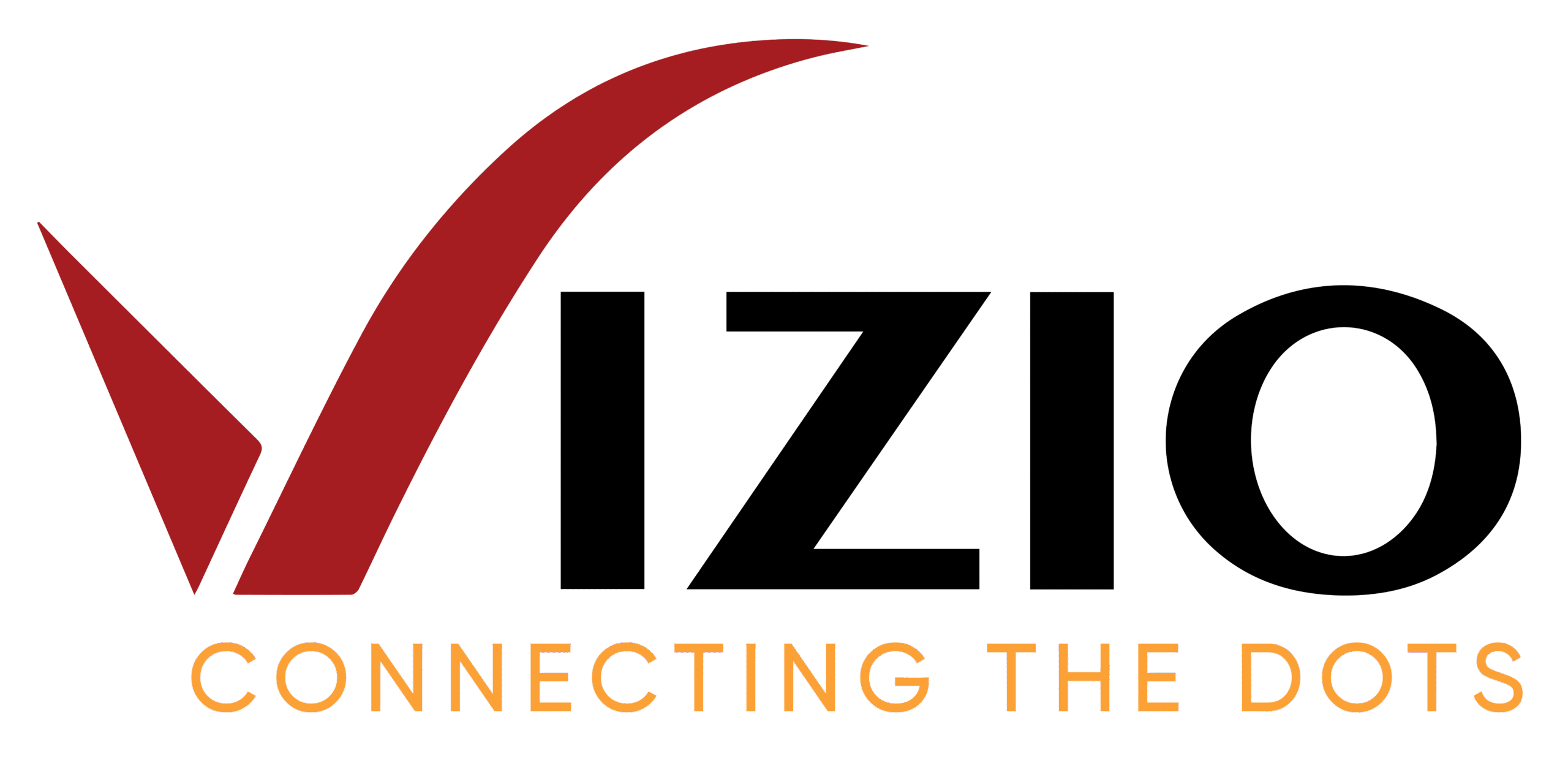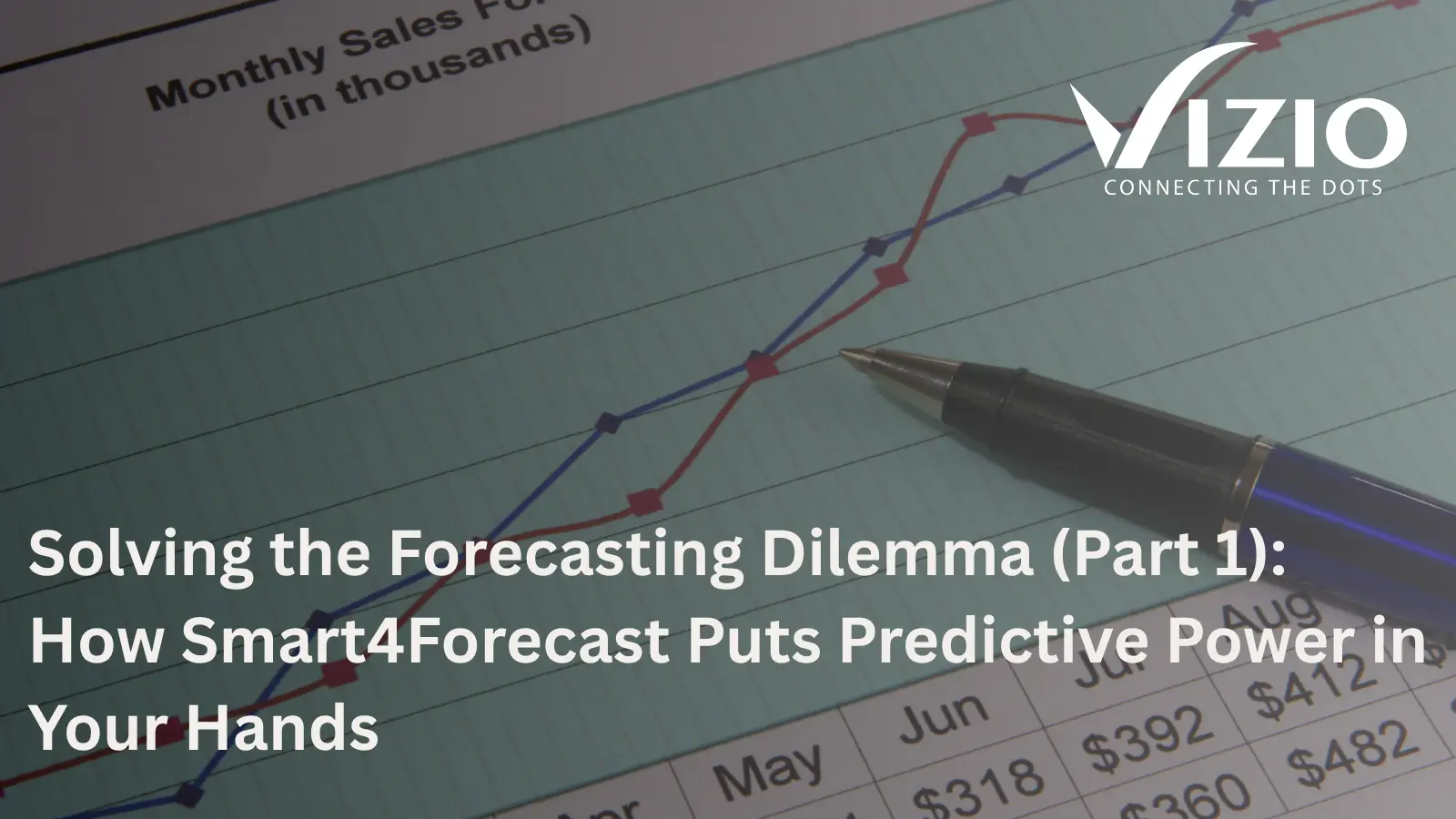In almost every business, decisions hinge on predictions: What will sales look like next quarter? Do we need to ramp up capacity six months from now? Will seasonal demand outpace supply? For many organizations, forecasting is more art than science – full of guesswork, bias, and uncertainty.
At Vizio Consulting, we built Smart4Forecast to change that. It’s a SaaS solution powered by machine learning and AI that learns from your data and delivers forecasts on any time horizon – from days to years. It’s designed to flex to virtually any business context, and to start producing value as soon as the model is trained.
In this two-part (or multi-part) series, we’ll walk you through the challenges organizations face in forecasting today, how Smart4Forecast works, and in subsequent parts, tips, architectures, case studies, and more.
In Part 1, let’s zoom in on a common, high-impact pain point: inventory forecasting in a volatile demand environment. Then we’ll see how Smart4Forecast handles it gracefully via a simple 3-step flow.
The Pain Point: Inventory Forecasting Under Demand Volatility
Imagine a consumer goods retailer selling a seasonal product (for example, outdoor grilling equipment). Demand peaks in summer, dips in winter, but in recent years, market conditions and consumer preferences have introduced considerable noise:
- Unpredictable weather disrupts buying patterns.
- Competitive promotions or supply chain delays shift demand curves.
- New product launches or marketing campaigns cause sudden spikes.
- Shipping delays, supplier disruptions, and global events shift lead times.
Because of this volatility, traditional forecasting methods – moving averages, linear extrapolation, or rule-of-thumb buffer logic – consistently fail:
- They underestimate peaks and produce stockouts, missing revenue.
- They overestimate in troughs and incur holding costs, spoilage, or obsolescence.
- The company ends each season either scrambling to reallocate stock or discounting excess inventory.
The finance, operations, and supply chain teams live in the tension between overstock and stockout, with forecasts that rarely align with reality. Forecast errors cascade: procurement orders, warehouse planning, logistics, manpower – all suffer from ripple effects.
This is a classic forecasting pain that occurs across industries: retail, consumer goods, electronics, spare parts, pharmaceuticals, food & beverage, and more.
So how do we fix it?
Enter Smart4Forecast: Your AI-Powered Forecasting Ally
Smart4Forecast was built to tackle exactly that kind of variable-demand, multivariate environment. Its philosophy is simple: make forecasting flexible, data-driven, and fast to adopt.
At its core, Smart4Forecast follows a clean, 3-step flow:
- Load historical data
- Learn from historical data
- Start forecasting
Though simple on the surface, under the hood the system supports sophisticated models, adaptive learning, and domain-agnostic setups so that it can apply to many business types.
Let’s revisit our inventory example and walk through how Smart4Forecast would operate.
Step 1: Load Historical Data
The retailer uploads its raw historical data: sales by SKU over time, perhaps broken out by store, region, channel, promotions, lead times, returns, marketing spend, and external signals (weather, economic indexes, etc.). Because Smart4Forecast is domain-agnostic, it doesn’t require you to reformat your business logic – as long as your data has time stamps and associated features, the system can ingest it.
In many legacy solutions, this data ingestion step is the stumbling block: data silos, inconsistent formatting, missing values, or domain-specific quirks (promotions, lead time lags) break pipelines. Smart4Forecast includes built-in preprocessing, cleaning, outlier detection, and normalization so you don’t have to build all that plumbing yourself.
Step 2: Learn From Historical Data
Once the data is ingested, the machine learning engine kicks in. It examines:
- Time series patterns (trend, seasonality, cycles)
- Exogenous variables (promotions, holidays, weather, macro signals)
- Cross-SKU correlations (if SKU A and SKU B move together)
- Lagged dependencies (how past demand, promotions, or supply delays affect future demand)
- Drift and regime shifts (when a pattern changes)
The model trains itself, iterating over many algorithmic approaches (statistical, ensemble, neural, hybrid) and selecting what works best for each SKU or group. It also validates itself (backtesting) to estimate error metrics like MAPE, RMSE, etc.
Importantly, as the system is domain-agnostic, it doesn’t assume “retail only” business logic – it can also be applied to service usage, subscription counts, energy demand, parts replacement, or any time-based metric your business needs.
Step 3: Start Forecasting
Once the model is trained, you simply ask it to forecast – for example, next 3 months, 6 months, or even daily forecasts for the next week. Smart4Forecast returns predictions along with confidence intervals and sensitivity to exogenous variables. You can also simulate “what-if” scenarios: what if a promotion runs, or a supplier delay occurs?
In our inventory example, once forecasts are available:
- Procurement teams know how much raw stock to order.
- Warehouses allocate capacity ahead of time.
- Marketing, operations, and finance teams align.
- You can proactively adjust strategies when the forecast signals an upcoming surge or drop.
Because the system is always learning, as you ingest new data, the model adapts. Over time, forecasting becomes increasingly precise.
Why This Approach Wins – Compared to Legacy Methods
- Speed of setup – You don’t need weeks or months of customization to use it. Once historical data is loaded, the system learns.
- Domain flexibility – Not restricted to retail, supply chain, or any single vertical.
- Adaptive learning – The model improves over time and adapts to shifts (a promotion, a product redesign, a supply chain disruption).
- Scenario forecasting – You can test “what if” conditions seamlessly.
- Transparency & confidence metrics – You don’t just get a point forecast, but error bounds and diagnostic insight.
In contrast, many traditional forecasting systems are brittle, rigid, or require heavy hand-tuning and domain knowledge to adapt to changes. Smart4Forecast’s AI backbone relieves you of that burden.
How Smart4Forecast Addresses the Inventory Pain Point
Returning to our case: the volatile seasonal retailer now gains:
- Better alignment between supply and demand with fewer surprises, reducing stockouts and overstocks.
- Confidence in ordering – with predictive lead times factored in.
- Operational synchronization – marketing, procurement, supply chain, and finance all work off the same forecast.
- Continuous improvement – as more data comes in, forecast accuracy improves, making successive seasons more predictable.
Moreover, this same methodology translates easily to other business scenarios: service usage forecasting, subscription base forecasting, parts failure prediction, or even staffing forecasting.
What to Expect in Later Parts
In Part 2 of this series, we’ll dive deeper into:
- The architectural design and ML models powering Smart4Forecast.
- How to perform scenario analysis and sensitivity testing.
- Real customer case studies (before/after) and ROI metrics.
- Best practices for data governance, model validation, and adoption in your team.
We’ll also explore extensions like forecast blending, ensemble models, anomaly detection, and alerts.
Conclusion: From Pain to Predictive Power
Forecasting in volatile environments is one of the toughest challenges many businesses face. But with Smart4Forecast, you don’t need to be a data science shop to benefit from advanced forecasting. Your historical data is your fuel; the AI engine is your guide; your business decisions become more confident.

